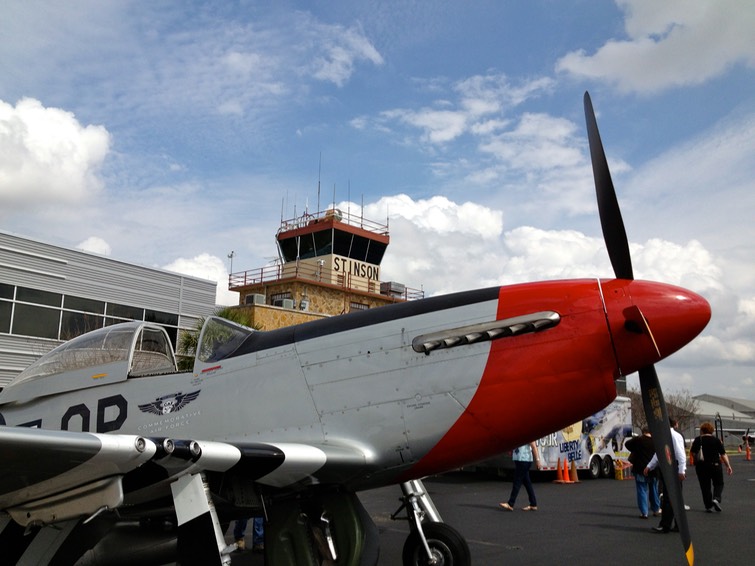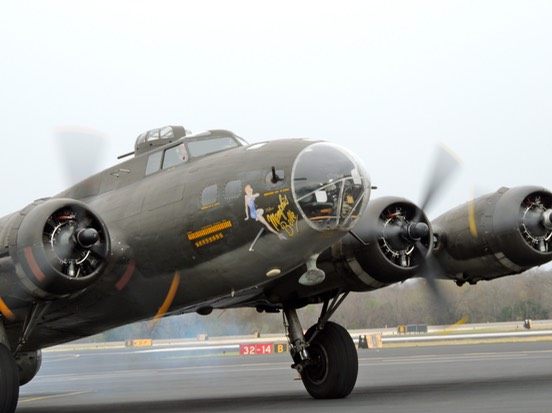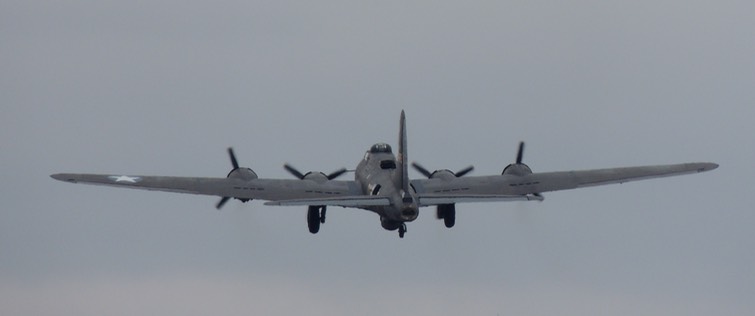STINSON FIELD WELCOMES
'MEMPHIS BELLE'
Story & Photos by Harry & Linda Kaye Perez Exclusive to the Wilson County News 4-2-14
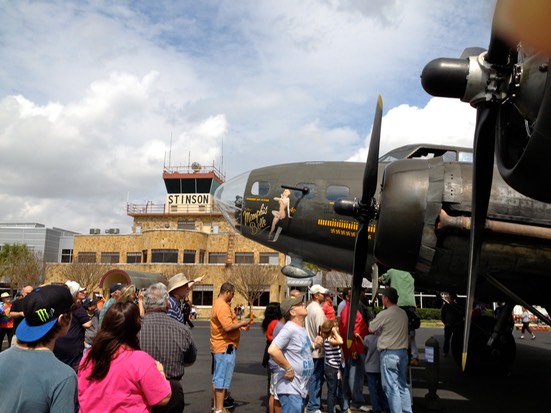
We could hear it - the roar of four Pratt & Whitney radial engines producing 3,000 horsepower - long before it came into view in the San Antonio sky just over the top of the trees as it approached the runway at Stinson Field. It was the completely restored Boeing B-17 Flying Fortress dubbed the Memphis Belle in honor of the original aircraft so named.
The sound of radial engines is distinctive and a head turner even for the non-aviator, and instinctively draws the listener in the direction of its origin. As human curiosity dictates, one would want to know what was going on and why. That is exactly what occurred at Stinson. Within minutes of its arrival, there were dozens of people there, wanting to see this magnificent flying museum.
History takes flight at San Antonio airfield
This restored B-17 bomber, dubbed the "Memphis Belle" in honor of the original plane bearing the name, attracts a crowd at Stinson Field during a recent visit to San Antonio
This aircraft was featured in the 1990 movie, Memphis Belle. It currently is being sponsored by the Liberty Foundation and retained the paint scheme of the original Memphis Belle in order to “Honor our veterans, educate current and future generations as to the high price of freedom, and to preserve our aviation heritage.”
How did this B-17 get its name
Pilot Robert Morton named his aircraft the Memphis Belle to honor his sweetheart, Margaret Polk, who was from Memphis, Tennessee. Their relationship ended, but the aircraft survived. We wonder if back then they knew this name would go down in history.
This Memphis Belle was in town on March 15th and 16th to continue to foster this goal and to offer free walk-through tours to give the public a chance to see and touch the aircraft, to sit in the pilot seat and sense what it might have been like to fly this great aircraft – maybe to sense what combat was like. The Liberty Foundation also offered rides for a cost that would cover a portion of the expenses of fuel, maintenance and other operational costs. The pilots and crew are volunteers and donate hundreds of hours to keep the Belle flying.
The Belle was accompanied by a North American P-51 Mustang to illustrate the importance of the rolls of both aircraft during the war. The P-51 provided escort protection for the B-17’s in route to their targets. On this weekend, the Liberty Foundation’s B-17, in cooperation with the Commemorative Air Force’s P-51, came to San Antonio to honor the Veterans and aviation history.
Between 1935 and 1945 there were 12,732 of these bombers built. They participated in all theatres of World War II, mostly with the 8th Air Force in Europe, dropping over 640,000 tons of bombs. It was also involved in three additional conflicts: the Israel war of 1948, Korean conflict, and U. S. involvement in Viet Nam. Today there are fewer than 100 airframes in existence and only 15 of those are in flying condition.
The original Memphis Belle was one of the first heavy bombers to complete 25 combat missions during World War II, and was fortunate to avoid losing a single crewman in combat. Her participation in combat missions took place within seven months between November 7, 1942 and May 19, 1943. After their final mission, the aircraft and crew returned to the United States to sell war bonds and drum up support for the war effort.
The significance of attaining 25 missions for all aircraft in the European Theatre was that this number represented what was believed to be the outer range of the crew performance so that combat fatigue on any one tour of action could be avoided. For the young aircrew, it meant going home to sweethearts or wives, moms and dads. The odds were against every crewmember that they would actually make it to 25 alive.
Following its stateside public relations tour, the fate of the Memphis Belle could have been like so many other surplus WWII aircraft, destined for the scrap yard. However, because of its notoriety, the Belle was saved, and for the next 59 years was transferred from agency to agency, from museum to museum, waiting for adequate funding to achieve full and permanent restoration. While she waited, she continued to deteriorate, escalating the cost. Finally, in 2004, the Memphis Belle was repatriated by the Air Force, and now is undergoing extensive restoration at the National Museum of the United States Air Force at Wright-Patterson AFB in Dayton, Ohio, and hopefully will be available for public viewing in the summer of 2015.
Historic Stinson Field
It certainly was appropriate that the Belle came to Stinson Field since it also has a rich history.
The field was established in 1914 by the Stinson family with Marjorie and Katherine being the most famous and did the most to make the field successful. Stinson Field is the second oldest still operating airport in the U. S. and has been utilized for every form of aviation throughout its history, from civilian to military. It has served aviation greats including Charles Lindbergh and Eddie Rickenbacker who flew off of Stinson on a regular basis.
Stinson is also home to the Texas Air Museum, open on Tuesday through Saturday, 10 a.m. to 5 p. m. Visit their website: www.texasairmuseum.org
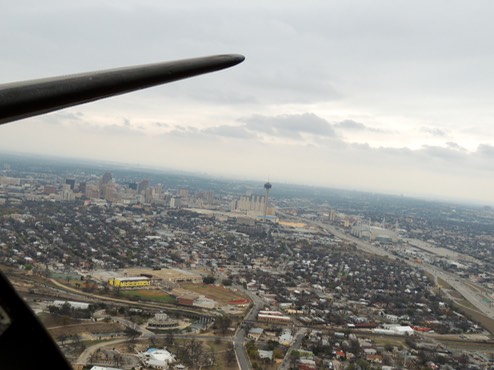
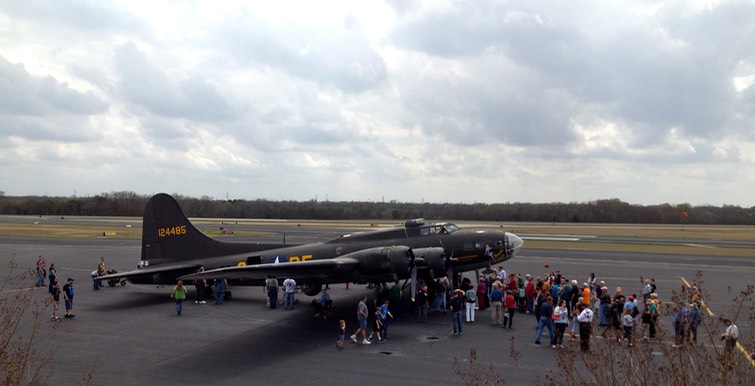
Find Out More
Liberty Foundation: http://www.libertyfoundation.org - The Memphis Belle B-17
Commemorative Air Force: http://www.commemorativeairforce.org - The P-51 Mustang
